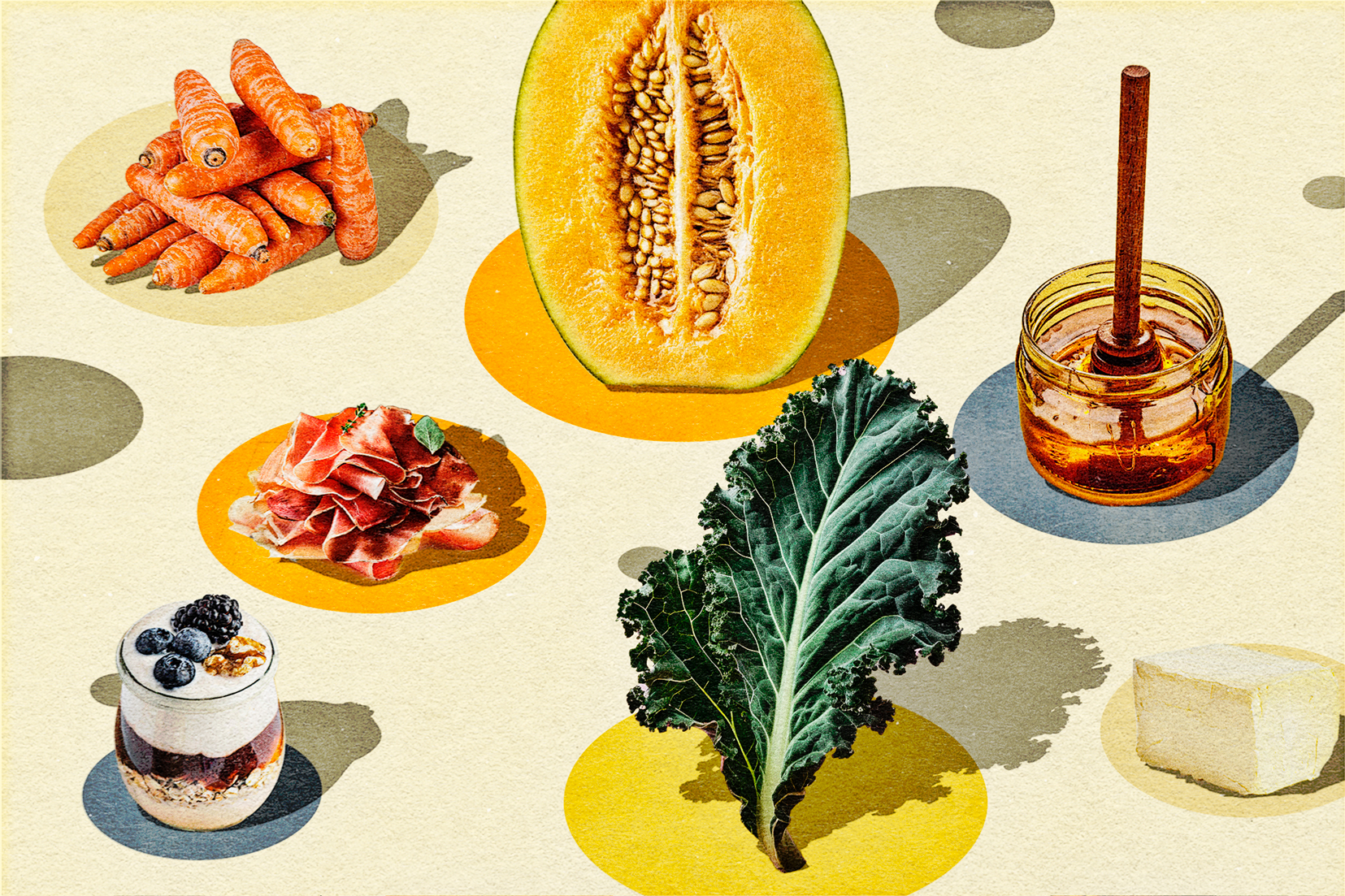There’s wisdom in tradition, and with all the fad diets and trending superfoods littering social media, it’s often wise to go back to basics: intuitive food pairings that have nourished generation upon generation of healthy families. Think a fresh springtime salad of dandelion greens drizzled with fresh lemon juice, a spoonful of honey stirred into a bowl of yogurt, or butter melting luxuriously over freshly cooked carrots. These traditional pairings not only taste amazing, but provide deep nourishment.
While home cooks have partnered key ingredients together for generations, researchers are just now catching up on recognizing the added health benefits of pairing complementary foods. It all has to do with the way certain nutrients interact. Certain pairings enhance nutrient absorption—meaning you get more out of the food you eat.
Butter and Vegetables
Steamed fresh vegetables dotted with melted butter taste delicious, especially as the butter seeps into every nook and cranny of your broccoli florets. In Northern Europe, where dairy cows are more common than olive trees, vegetables are traditionally cooked with butter. It’s a classic pairing, but butter does much more than make your veggies taste delicious—it helps you absorb key nutrients.

Butter helps your body absorb fat-soluble beta-carotene found in carrots. (Robyn Mackenzie/Shutterstock)
Orange-colored vegetables and leafy greens are packed with vitamin K and beta-carotene, a precursor to vitamin A. Both micronutrients are fat-soluble, meaning your body needs a little fat to absorb them properly. Plus, since fat adds flavor, it makes vegetable dishes taste better—encouraging you to eat more of these healthy foods.
To take advantage of these benefits, simply drizzle a little melted butter or ghee (clarified butter) over your vegetables when you roast them, or add a pat of butter to steamed vegetables at the table. You can get the same benefits from other healthy fats such as olive oil.
Tomatoes and Olive Oil
Tomatoes and olive oil are a classic combination found in dishes across the Mediterranean. You'll see them together in Spanish sofrito, French ratatouille, luscious Italian sauces, and hearty Greek stews. This combination does more than simply taste good; it’s a dynamic pairing that supports heart health, too.

Olive oil enhances your body's absorption of lycopene, the antioxidant that gives tomatoes their vibrant red color. (Oksana Mizina/Shutterstock)
Just as combining butter with vegetables helps you absorb key nutrients, partnering olive oil with tomatoes does the same. Tomatoes are rich in lycopene, an antioxidant related to beta-carotene that gives tomatoes their vibrant red color. Olive oil enhances your body’s absorption of lycopene, especially when the oil and tomatoes are cooked together. It’s this combination that may lay part of the foundation for the Mediterranean diet’s health benefits, with research suggesting that it may reduce the risk of heart disease.
If you want to take advantage of these benefits, try stirring a little olive oil into your pasta sauce or tossing your tomatoes with olive oil before you roast them.
Prosciutto and Melon
Prosciutto e melone, as it’s called in Italian, is another classic pairing. The salty, dry-cured ham balances the sweetness of the melon to produce a beautiful appetizer. Not only does it taste great, but these two ingredients work together to pack a punch of essential vitamins and minerals.

Prosciutto and melon is a classic Italian combo that demonstrates the power of a bit of fat. (Monica Bertolazzi/Getty Images)
Melons such as honeydew and cantaloupe are loaded with vitamin C, beta-carotene, potassium, and antioxidants that support immune function, skin health, and hydration. Prosciutto contains protein, fat, and salt. When eaten together, prosciutto’s fat helps the body absorb the beta-carotene and other fat-soluble nutrients from the melon. Plus, the prosciutto’s own combination of fat and protein slows down the speed at which your body absorbs the melon’s natural sugars, supporting better blood sugar balance and metabolic health.
For a no-fuss way to enjoy this pairing, thinly slice cantaloupe and wrap each piece in a slice of prosciutto. Many people also enjoy finishing it with a little aged balsamic vinegar.
Citrus and Greens
Greens are super nutritious, low in calories, and brimming with vitamins, antioxidants, and minerals such as iron. Partnering iron-rich leafy greens such as spinach, chard, kale, dandelion, and beet greens with citrus juice helps enhance the availability of iron. Vitamin C, found in abundance in citrus, makes the iron found in plants a little easier for your body to absorb. That might be particularly helpful for people at risk of iron deficiency—especially children, women of reproductive age, and people following a vegan or vegetarian diet.

Vitamin C, abundant in citrus juice, helps make the iron in leafy greens more available. (Tati Liberta/Shutterstock)
Making this combination work for you is as easy as switching from vinegar to citrus juice in your salad dressing or squeezing lemon juice over sautéed greens.
Yogurt and Honey
Yogurt is a popular breakfast food, whether blended into a fruit smoothie or served in a bowl with granola and berries. Swirling a spoonful of honey into your yogurt makes it even better.
Like other fermented foods, yogurt is brimming with probiotics, beneficial microorganisms that support gut health. There’s a catch, though: It’s hard for those beneficial bacteria to survive in the stomach’s highly acidic environment. That’s where honey comes in.

Honey enhances yogurt's gut-friendly probiotic power. (papadimitriou/Getty Images)
Honey is a prebiotic, meaning it serves as food for all the beneficial bacteria in your digestive system. When partnered with honey, probiotics such as the lactobacillus and bifidobacterium found in yogurt thrive. You might just find your gut health and digestion improve as a result.
Indeed, research from the University of Illinois recently confirmed that honey protects probiotics in yogurt from stomach acid, allowing more of them to reach your intestines, where they can support your health the most. While all types of honey seemed to have this effect, clover honey proved the best.
Adding honey to yogurt may also enhance its antioxidant activity. Researchers from the University of Basilicata in Italy found that while all of the types of honey they tested conveyed these benefits, the addition of chestnut honey, a richly colored and dynamically flavored variety, yielded the most potent effects.
So consider skipping flavored yogurts and picking up plain yogurt and a jar of honey instead. Spoon the yogurt into a bowl, drizzle it with honey, and add a few fresh berries or chopped nuts for good measure.











